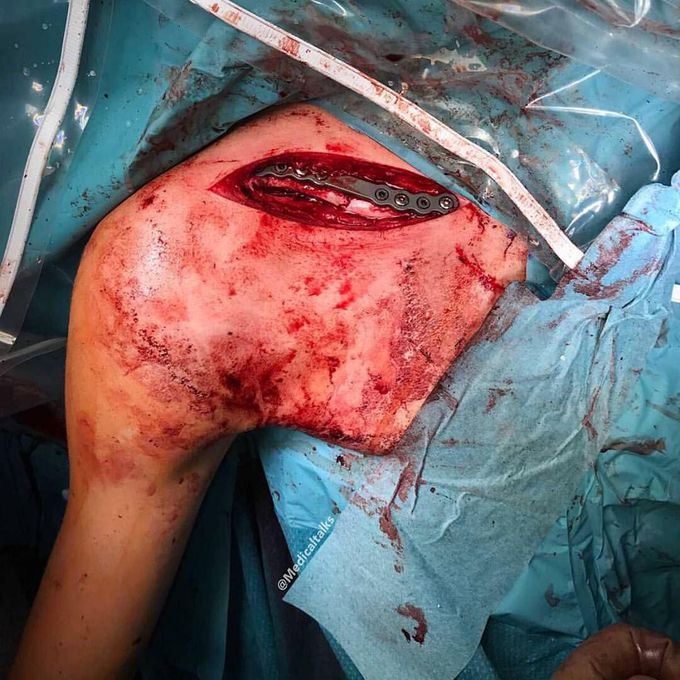


Fracture of the clavicle repaired with a titanium plate!!
Put some metal on it! A clavicle fracture, also known as a broken collarbone, is a super common sports injury, often as a result of indirect or direct trauma to the shoulder region. It is challenging for the body to heal on its own, as an immobilizing cast cannot be placed correctly around the fracture. The clavicle is shaped like an "S". The proximal half curves outward (convex) providing space for the neurovascular bundle of the upper limb. The distal half curves back (concave) before attaching to the scapula (coracoid and acromion). Clavicle fractures usually occur at the junction (midshaft) between these two curves, most likely because this area lacks ligamentous attachments to adjacent bones and is the bone's thinnest segment. Even though the clavicle is subcutaneous, with only a thin layer of overlying soft tissue, open fractures are uncommon. However, tenting (ie, taught stretching) of the overlying skin is relatively common. If left uncorrected, tenting may lead to necrosis of the overlying skin and conversion to an open fracture. Tenting is therefore an indication for closed reduction or surgical repair. Following the surgery, immobilization with either a sling or figure of eight bandage is continued until clinical union occurs (ie, the fracture site is nontender and the patient can move the arm fully with little or no discomfort).
Hemodynamic stimuli&nonhemodynamic stimuliEffects of sugar on teeth



